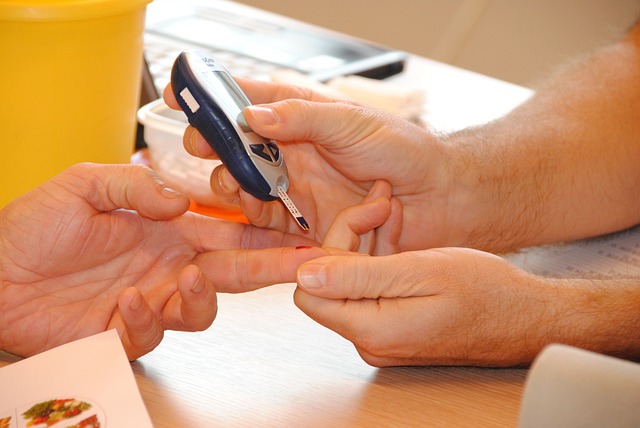For individuals with type 2 diabetes taking insulin, managing doses is a critical aspect of their treatment regimen. Proper management of insulin doses can help maintain blood sugar levels within a healthy range and prevent complications associated with high or low blood sugar. However, determining how much to increase or decrease insulin doses can be challenging. In this blog post, we’ll examine the guidelines and best practices for adjusting insulin doses in type 2 diabetes.
Basal Insulin
The initiation of basal insulin alone represents the most convenient initial insulin therapy for individuals with type 2 diabetes, and it can be supplemented with metformin and other non-insulin injectables (i.e. GLP-1 RA or SGLT-2 Inhibitors). Initial dosage can be either 10 units daily or calculated according to body weight (0.1–0.2 units/kg/day) based on the severity of hyperglycemia, with personalized adjustments made over days to weeks as necessary (ADA 2024 guidelines). Typically, basal insulin is adjusted by 2 to 3 units every three to seven days if blood glucose levels are not meeting the desired targets. Clinicians need to be mindful of the risk of excessive basal insulin dosing, as basal doses exceeding ~ 0.5 units/kg of body weight, could lead to significant differences in pre and postprandial glucose levels causing hypoglycemic events.
Managing Prandial Insulin in Type 2 Diabetes
If patients are unable to manage hyperglycemia with basal insulin alone, prandial insulin may be necessary to achieve their blood sugar targets. If a person isn’t already using a GLP-1 RA or a dual GIP and GLP-1 RA, it’s recommended to consider using one before starting prandial insulin. This helps improve control after meals and reduces the risk of hypoglycemia and weight gain associated with insulin therapy. For those starting prandial insulin, a starting dose of 4 units or 10% of the basal insulin dose at the largest meal or the meal causing the highest post-meal blood sugar levels is generally considered safe. The prandial insulin regimen can then be adjusted based on individual needs. As compared to patients with Type 1 diabetes, patients with type 2 diabetes typically have higher insulin resistance and require higher daily insulin doses (~ 1 unit/kg), but they also experience fewer episodes of low blood sugar.
ADA Goals and Insulin Dose Adjustments
Current ADA goals for glucose control are an A1C of < 7.0%, a fasting blood glucose of between 80 and 130 mg/dL, and a 2-hour postprandial of < 180 mg/dL (ADA 2024 guidelines). Adjustment of insulin doses can be based on self-monitoring of blood glucose at home or continuous glucose monitoring (CGM). Basal insulin is adjusted based on fasting glucose readings, while both preprandial and postprandial readings inform adjustments to mealtime insulin. Gradually adjusting insulin dosage over time is crucial for enhancing glycemic control and preventing diabetes-related complications. The current 2024 ADA guidelines recommend that the prandial insulin is adjusted by 1 to 2 units or 10 – 15 % twice weekly if blood glucose levels are not meeting the desired targets. In case of any hypoglycemic episodes, it’s recommended that you determine the cause, and if there is no clear cause the dose should be lowered by 10-20%.
Looking for more on diabetes? Check out our free table on insulin expiration dates.
In summarizing the management of insulin in type 2 diabetes, most patients will start with basal insulin to help lower fasting blood sugar. If that alone is not effective in combination with other non-insulin agents, prandial insulin may be considered.
This article was written by Jack Megato, PharmD Candidate in collaboration with Eric Christianson, PharmD, BCPS, BCGP
References
- American Diabetes Association Professional Practice Committee. American Diabetes Association. Standards of Care in Diabetes – 2024. Diabetes Care 1 January 2024; 47 (Supplement_1): S1–S321.
- Petznick A. Insulin management of type 2 diabetes mellitus. Am Fam Physician. 2011 Jul 15;84(2):183-90. PMID: 21766768.
- Klonoff, David C. Benefits and limitations of self-monitoring of blood glucose. Journal of diabetes science and technology vol. 1,1 (2007): 130-2. (Accessed on Feb 27, 2024.)
- American Diabetes Association. 9. Pharmacologic approaches to glycemic treatment: Standards of Medical Care in Diabetes-2020. Diabetes Care. 2020;43(Suppl 1):S98-S110. PMID: 31862752 pubmed.ncbi.nlm.nih.gov/31862752/.
- Jellinger PS, Davidson JA, Blonde L, et al. Road maps to achieve glycemic control in type 2 diabetes mellitus: ACE/AACE Diabetes Road Map Task Force. Endocr Pract. 2007;13(3):260-268.
- Coetzee A. An introduction to insulin use in type 2 diabetes mellitus. S Afr Fam Pract (2004). 2023 Apr 20;65(1):e1-e5. doi: 10.4102/safp.v65i1.5702. PMID: 37132569; PMCID: PMC10157446.
- Nyenwe EA, Jerkins TW, Umpierrez GE, Kitabchi AE. Management of type 2 diabetes: evolving strategies for the treatment of patients with type 2 diabetes. Metabolism. 2011 Jan;60(1):1-23. doi: 10.1016/j.metabol.2010.09.010. PMID: 21134520; PMCID: PMC3746516.



0 Comments